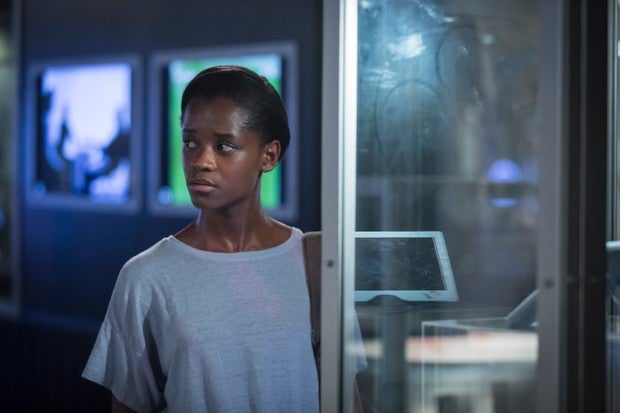
Director Jordan Peele may be rebooting The Twilight Zone but can he possibly top what’s already being done over on Black Mirror?
Netflix’s sci-fi anthology series clearly has its roots in that black-and-white, macabre psychological-suspense-thriller show from the 1950s. But for those who’ve never seen those nearly 60-year-old episodes, Black Mirror’s social commentary on the consequences of post-millennial technology is the last word in dark satire.
Last Friday marked the release of six new episodes, and the season four finale, “Black Museum,” approaches race in a more nuanced way than Netflix’s ham-fisted Will Smith vehicle Bright could only wish for.
In the very real but stranger-than-fiction reality of being Black on this planet, it’s no secret that Sarah Baartman traveled as a freak show attraction in 19th-century Europe because of the size of her rear end; a French museum displayed her skeleton and body cast for decades. And the Bronx Zoo’s monkey house exhibited a Congolese man, Ota Benga, in a racist anthropological exhibit back in 1906. As an allegorical deconstruction of American racism, “Black Museum” doesn’t present a far-fetched premise at all, given the many outrageous examples of modern history.
A young British woman of color, Nish (Letitia Wright), stops at an abandoned roadside gas station to solar charge her vintage car and makes the seemingly arbitrary decision to bide her time at the nearby Black Museum. There she encounters proprietor Rolo Haynes (Douglas Hodge), who goes about explaining the chilling contents of the museum. It’s precisely the type of place Baartman and Benga might be exhibited, though the objects on display and the stories behind them don’t betray any racial undertones until the third and final attraction.
Finally, we get to the hologram of a broken African-American man named Clayton Leigh, once falsely accused of murder. Haynes, staunchly convinced of Leigh’s guilt, once persuaded him to sign away the future rights to his spiritual consciousness for an undefined technological experiment while he was on death row. After Leigh’s execution, he found himself kept alive as a hologram—the main attraction of the Black Museum, which charges a fee for visitors to electrocute him all over again, dozens of times a day. As the museum falls on hard times, Haynes allows racists and sadomasochistic perverts to torture Leigh for their own pleasure.
Black pain as entertainment lies at the heart of “Black Museum,” a truism underlying so much of our experience in this country —from the public lynching of enslaved Africans to the fetishizing of hip-hop heroes who’ve been shot and jailed and lived to tell the tale. (Or didn’t.) The episode can even be a bit hard to watch, hitting so close to home, though the revenge narrative redeems all in the end. With Peele’s The Twilight Zone on the way, not to mention Ava DuVernay’s TV adaptation of Octavia E. Butler’s Dawn coming on the horizon, as well, the mainstreaming of Black Afrofuturism has arrived.
With “Black Museum,” Black Mirror’s season finale did the damn thing.




